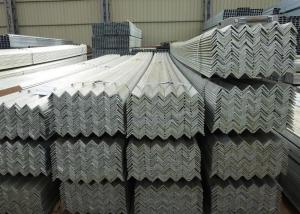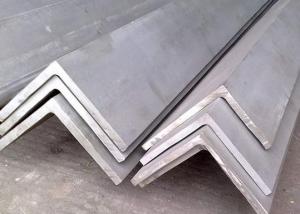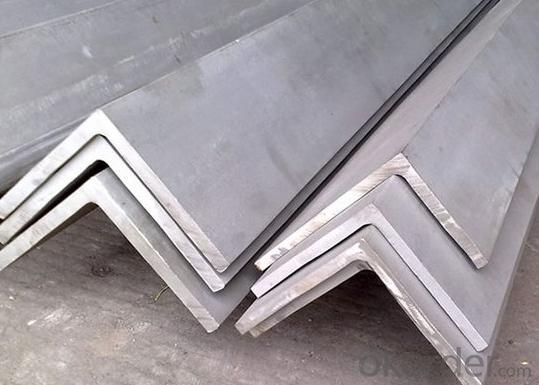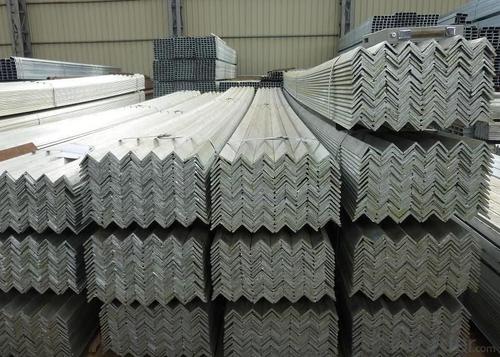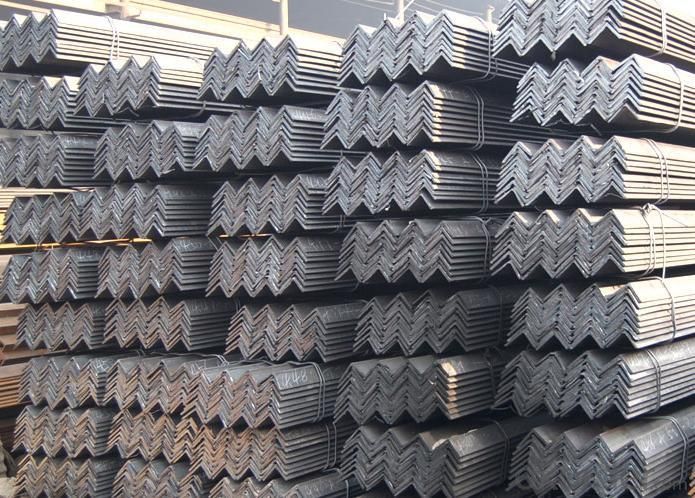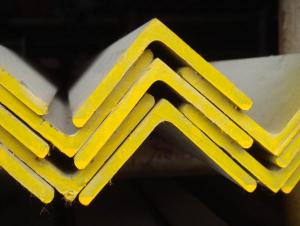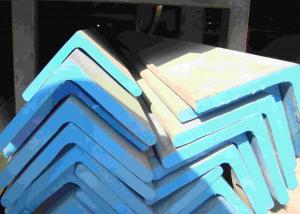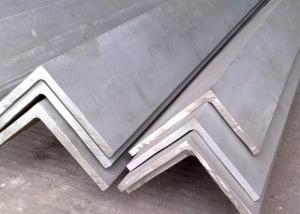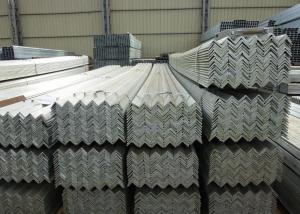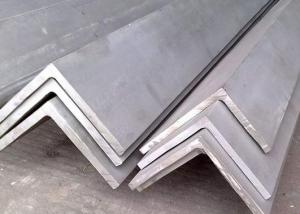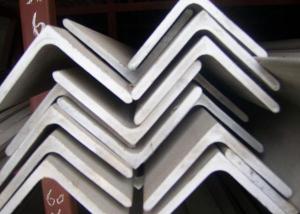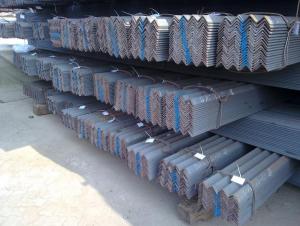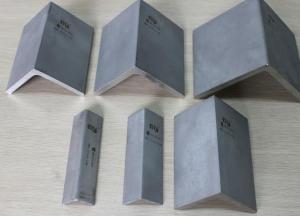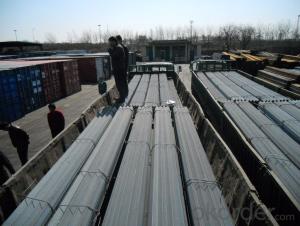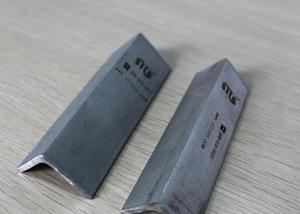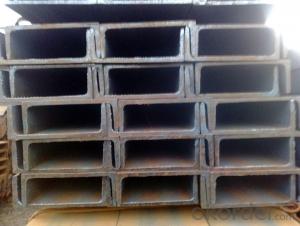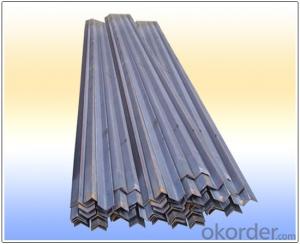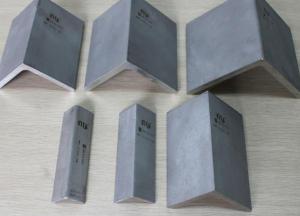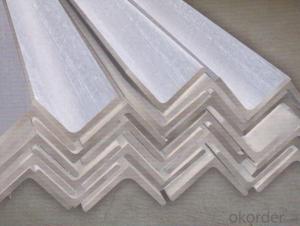Stainless Steel Angles Equal Shape
- Loading Port:
- China Main Port
- Payment Terms:
- TT or LC
- Min Order Qty:
- 1 Ton m.t.
- Supply Capability:
- 2000 Tons Per Month m.t./month
OKorder Service Pledge
OKorder Financial Service
You Might Also Like
Stainless Steel Angles
1.Grade: SS200,300,400 series
2.Size: 25×25×3 mm-100×100×10mm
3.Process: HRAP
4. Length: 2-6m
5. Shape: Equal
6. Delivery: within 20 days
7. MOQ: 1 ton
8. Certificate: ISO 9001:2008, SGS
9. Package:Standard Export Packing, or put into wooden boxes according to your
requirement
10. Application: Construction, Marine, Industry and so on
Name | Stainless Steel Angles | ||||||
Standard | ASTM A554, A312, A249, A269 and A270 | ||||||
Material Grade | 304,316,201,202, 316L,430 | ||||||
Length | 6m or as customers' request | ||||||
Tolerance | a) thickness: +/-0. 15mm | ||||||
| |||||||
b) Length:+/-4. 5mm - 0mm | |||||||
Surface | 180G, 320G, 400G Satin / Hairline(Matt Finish, Brush, Dull Finish) 400G, 500G, 600G or 800G Mirror finish | ||||||
Application | Decoration construction, upholstery, industry instruments | ||||||
Test | Squash test, Extended test, Water pressure test, Crystal rot test, Heat treatment, NDT | ||||||
Chemical Composition of Material |
Composition
Material | 201 | 202 | 304 | 316L | 430 | |
C | ≤0.15 | ≤0.15 | ≤0.08 | ≤0.08 | ≤0.12 | ||
Si | ≤1.00 | ≤1.00 | ≤1.00 | ≤1.00 | ≤1.00 | ||
Mn | 5.5-7.5 | 7.5-10 | ≤2.00 | ≤2.00 | ≤1.00 | ||
P | ≤0.06 | ≤0.06 | ≤0.045 | ≤0.045 | ≤0.040 | ||
S | ≤0.03 | ≤0.03 | ≤0.030 | ≤0.030 | ≤0.030 | ||
Cr | 16-18 | 17-19 | 18-20 | 16-18 | 16-18 | ||
Ni | 3.5-5.5 | 4-6 | 8-10.5 | 10-14 |
| ||
Mo |
|
|
| 2.0-3.0 |
| ||
Mechanical Property | Material Item | 201 | 202 | 304 | 316L | ||
Tensile Strength | ≥535 | ≥520 | ≥520 | ≥520 | |||
Yield Strength | ≥245 | ≥205 | ≥205 | ≥205 | |||
Extension | ≥30% | ≥30% | ≥35% | ≥35% | |||
Hardness (HV) | <253 | <253 | <200 | <200 | |||

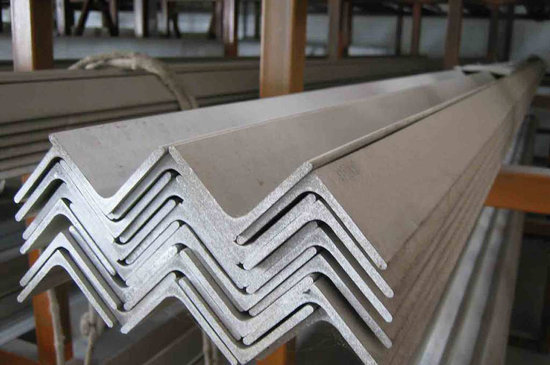
- Q: What is the maximum length of a stainless steel angle?
- The maximum length of a stainless steel angle varies depending on the specific manufacturer and supplier. However, stainless steel angles are commonly available in standard lengths of 20 feet or 6 meters.
- Q: Can stainless steel angles be used in chemical storage tanks?
- Yes, stainless steel angles can be used in chemical storage tanks. Stainless steel is known for its excellent corrosion resistance and durability, making it an ideal material for storing chemicals. The use of stainless steel angles in the construction of the tank provides structural support and stability. Additionally, stainless steel is non-reactive to most chemicals, ensuring that the stored substances will not be contaminated. It is important, however, to select the appropriate grade of stainless steel that is compatible with the specific chemicals being stored in order to ensure optimal performance and longevity of the tank.
- Q: What are the factors that affect the cost of stainless steel angles?
- The factors that affect the cost of stainless steel angles include the grade and quality of stainless steel used, the size and dimensions of the angles, the quantity purchased, market demand and supply, and any additional processing or finishing required. Other factors such as transportation costs, tariffs, and fluctuations in raw material prices may also impact the overall cost.
- Q: Are stainless steel angles suitable for decorative purposes?
- Stainless steel angles have great potential for decorative purposes. With its versatility and durability, stainless steel offers a sleek and polished look that is perfect for adding a decorative touch. These angles can be used in various ways, such as creating trim, frames, edging, and accents. They are highly malleable and can be shaped, bent, and welded to achieve the desired design. Furthermore, different surface treatments like polishing or brushing can be applied to enhance their decorative appeal. Moreover, stainless steel is highly resistant to corrosion, staining, and rusting, making it an excellent choice for both indoor and outdoor decorative projects. Its strength and long-lasting nature ensure that the decorative elements made from stainless steel angles will maintain their aesthetic appeal for an extended period of time. Whether you are working on a residential or commercial project, stainless steel angles can provide a modern and sophisticated look that will enhance the overall visual appeal of any space.
- Q: What are the different shapes available in stainless steel angles?
- Stainless steel angles are available in various shapes including equal angles, unequal angles, L-shaped angles, and rounded angles.
- Q: How is a stainless steel angle manufactured?
- A stainless steel angle is typically manufactured through a process known as hot rolling, where a stainless steel billet is heated to high temperatures and then passed through a series of rolling mills to shape it into the desired angle profile. This process helps in achieving the required dimensions, smooth surface finish, and improved mechanical properties of the stainless steel angle.
- Q: Can stainless steel angles be used in the marine industry?
- Yes, stainless steel angles can be used in the marine industry. Stainless steel has excellent corrosion resistance properties, making it highly suitable for use in marine environments where it is constantly exposed to saltwater and moisture. Stainless steel angles are commonly used in marine applications such as boat and shipbuilding, as well as in the construction of docks, piers, and other marine structures. The high strength and durability of stainless steel angles ensure that they can withstand the harsh conditions of the marine industry, including the effects of waves, tides, and weather. Additionally, stainless steel angles are easy to clean and maintain, further enhancing their suitability for marine applications.
- Q: Are stainless steel angles available with holes for easy installation?
- Yes, stainless steel angles are available with holes for easy installation. These holes are typically pre-drilled at regular intervals along the length of the angle and are designed to accommodate screws or other fasteners. The availability of angles with holes may vary depending on the supplier or manufacturer, but it is a common feature in many stainless steel angle products. These holes make it convenient for users to install the angles securely and efficiently, saving time and effort during the installation process.
- Q: What is the tolerance for stainless steel angles?
- The tolerance for stainless steel angles refers to the allowable deviation or variation in the dimensions of the angles. Tolerances are specified in order to ensure that the angles meet the required standards and can be used effectively in various applications. The tolerance for stainless steel angles typically depends on the specific dimensions and specifications of the angles. Common tolerances for stainless steel angles may include variations in length, width, thickness, and straightness. These tolerances are often expressed in terms of a range or a maximum allowable deviation. The tolerance for stainless steel angles can vary depending on the industry standards, the intended use of the angles, and the specific manufacturing processes used. It is important to consult the relevant industry standards or specifications to determine the specific tolerance requirements for stainless steel angles in a particular application. In general, stainless steel angles are manufactured to meet tight tolerances in order to ensure their dimensional accuracy and structural integrity. This allows for proper fit and alignment in construction, manufacturing, and other applications where precision is crucial. It is worth noting that the tolerance for stainless steel angles can also be influenced by factors such as the grade of stainless steel used, the manufacturing method employed, and any additional fabrication processes. Therefore, it is important to consider these factors when determining the tolerance requirements for stainless steel angles in a specific application.
- Q: What are the weight capacities of stainless steel angles?
- The weight capacities of stainless steel angles vary depending on various factors such as the size, thickness, and grade of the stainless steel angle. Generally, stainless steel angles have high load-bearing capacities due to their inherent strength and durability. However, it is crucial to consult the manufacturer's specifications or engineering calculations to determine the exact weight capacity of a specific stainless steel angle. Additionally, factors such as the support structure and the distribution of the load also need to be considered when determining the weight capacity of stainless steel angles in practical applications.
1. Manufacturer Overview
| Location | Zhejiang, China |
| Year Established | 2010 |
| Annual Output Value | above US$16 million |
| Main Markets | East Asia, Middle East. |
| Company Certifications |
2. Manufacturer Certificates
| a) Certification Name | |
| Range | |
| Reference | |
| Validity Period |
3. Manufacturer Capability
| a) Trade Capacity | |
| Nearest Port | Shanghai |
| Export Percentage | |
| No.of Employees in Trade Department | above 10 people |
| Language Spoken: | English, Chinese |
| b) Factory Information | |
| Factory Size: | about 30000 square meter |
| No. of Production Lines | above 7 |
| Contract Manufacturing | OEM Service Offered |
| Product Price Range | Average |
Send your message to us
Stainless Steel Angles Equal Shape
- Loading Port:
- China Main Port
- Payment Terms:
- TT or LC
- Min Order Qty:
- 1 Ton m.t.
- Supply Capability:
- 2000 Tons Per Month m.t./month
OKorder Service Pledge
OKorder Financial Service
Similar products
Hot products
Hot Searches
Related keywords
